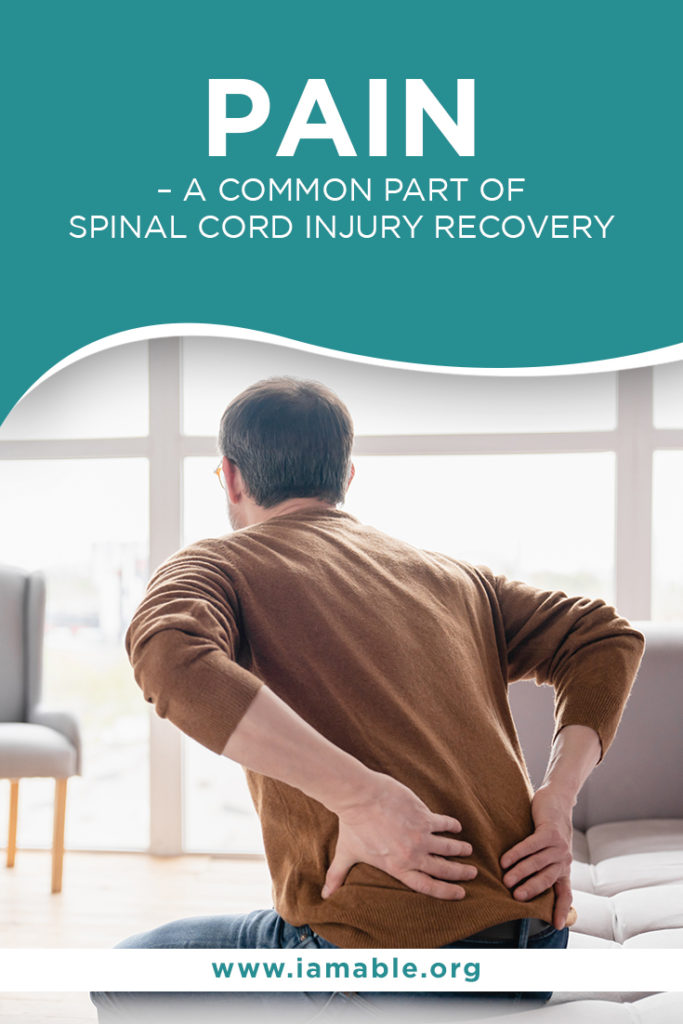Miami, FL 33186

Pain is one of the many things included in every patient’s journey to Miami spinal cord injury recovery. So, if you experience symptoms like musculoskeletal pain or visceral pain, rest assured that you’re not alone. Thousands share the same challenge and actively look for ways to improve their symptoms and cope with the effects of an SCI. Let’s help you figure out how to move forward and ensure a smooth recovery with our discussion on pain and spinal cord injuries.
Any person suffering from SCI is susceptible to developing all kinds of painful symptoms. Studies explain that this happens because of increased sensitization in various areas along the spinal cord and the lack of muscle movement. These symptoms can worsen over time, depending on the quality of patient care you receive and the level of commitment you pour into achieving a quick Miami spinal cord injury recovery.
If you experience painful symptoms, it will help to know how to describe them to your physician. This way, you can customize your patient care plan and find remedies that best fit your situation. Below are the usual types of pain that patients and healthcare professionals associate with an SCI:
As the name suggests, musculoskeletal pain affects the muscles and other connective tissues. It’s a fairly common problem among SCI survivors because of the sudden decrease in mobility and pre-existing muscle strain or damage. Notably, some patients develop musculoskeletal pain because of prolonged use of wheelchairs or other assistive devices.
Most SCI survivors who develop musculoskeletal pain notice worse symptoms when moving or engaging in rigorous activities. The pain also affects the upper limbs or upper back region because both structures work extra hard to prop the body against assistive devices like wheelchairs, crutches, and canes.
There are also instances when patients experience muscle spasms because of increased spasticity – a hallmark symptom of SCI recovery.
If you experience musculoskeletal pain, your physician might recommend using the following remedies to curb your symptoms:
Neuropathic or neurogenic pain is also a widespread health complaint among SCI survivors. It’s also harder to treat by doctors and therapists compared to other types of SCI-induced pain symptoms.
Patients who experience this type of pain mainly experience pins and needles and tingling sensation. However, others notice additional problems such as:
Studies explain that the painful sensation stems from the signal interferences caused by damaged or severed nerve tissues. Miscommunication between the different body parts and the CNS can heighten your pain and pressure sensitivity in some areas.
If you experience neuropathic pain, it might be a good idea to explore the following:
Visceral pain is a less common symptom observed among SCI survivors. This type of pain stems from impaired visceral organs such as the gut, heart, and lungs. It can be challenging to diagnose this type of SCI-caused pain because it can affect proximal tissues like the lower back, shoulders, or neck. For example, some SCI survivors develop shoulder pain because of gall-bladder malfunction.
If your symptom doesn’t stem from a nerve or muscle problem, it likely traces its origin to a visceral organ defect. Naturally, this will require you to tap into a different approach from those we enumerated above. Some examples of these options include the following:
Pain is an inevitable part of an SCI survivor’s journey towards healing and recovery. So, besides the remedies for the different types of SCI pain, we also recommend making a few changes to your daily life. By doing so, you can improve how you cope with the challenges of your SCI recovery phase.
Below are some of the most effective lifestyle adjustments that SCI patients should consider adding to their routine:
Indeed, living after a spinal cord injury can come with varying problems and challenges. But that doesn’t mean that you should stop looking forward to a happy life. We hope our guide on the different types of SCI pain can help you navigate your life after a paralyzing incident.
If you need help improving your chances of achieving long-term Miami spinal cord injury recovery, we recommend working with the iAM ABLE team. With our team’s support and therapy equipment, you can better manage the different symptoms mentioned above.
Visit iAM ABLE today to learn more about we help SCI survivors. Alternatively, you can download our guide on how to thrive after a paralyzing injury like an SCI and learn the key steps you need to work on to improve how you cope with everyday challenges.
Grab our free e-book 7 Unbelievably Important Steps to Take to THRIVE after Paralysis by clicking the image below.
